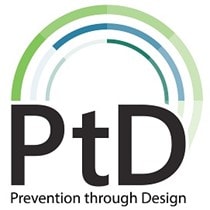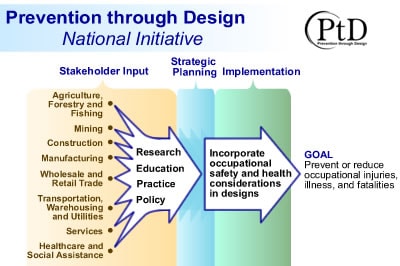Key points
- Prevention through Design can prevent and reduce occupational injuries, illnesses, and fatalities by designing out or minimizing hazards and risks.
- NIOSH is committed to the successful implementation of Prevention through Design efforts (see NIOSH strategic goals 5 and 6).

Overview
One of the best ways to prevent and control occupational injuries, illnesses, and fatalities is to "design out" or minimize hazards and risks. NIOSH leads a national initiative called Prevention through Design (PtD). The purpose of PtD is to promote this concept and highlight its importance in all business decisions.
Defining
The PtD initiative was developed to support designing out hazards, the most reliable and effective type of prevention. PtD encompasses all of the efforts to anticipate and design out hazards to workers in facilities, work methods and operations, processes, equipment, tools, products, new technologies, and the organization of work. The focus of PtD is on workers who execute the designs or have to work with the products of the design.
Approach
The PtD National Initiative will be developed and implemented by industry sector addressing four functional areas: Research, Education, Practice, and Policy. As the chart below indicates, this process encourages stakeholder input through a sector-based approach consistent with the one used under the National Occupational Research Agenda.

The ultimate goal of the PtD initiative is to prevent or reduce occupational injuries, illnesses, and fatalities through the inclusion of prevention considerations into all designs that impact workers.
Along the way, sub-goals will be identified to provide a path toward achieving the primary goal. NIOSH will serve as a catalyst to establish this Initiative, but in the end, the partners and stakeholders must actively participate in addressing these goals to make PtD business as usual.
